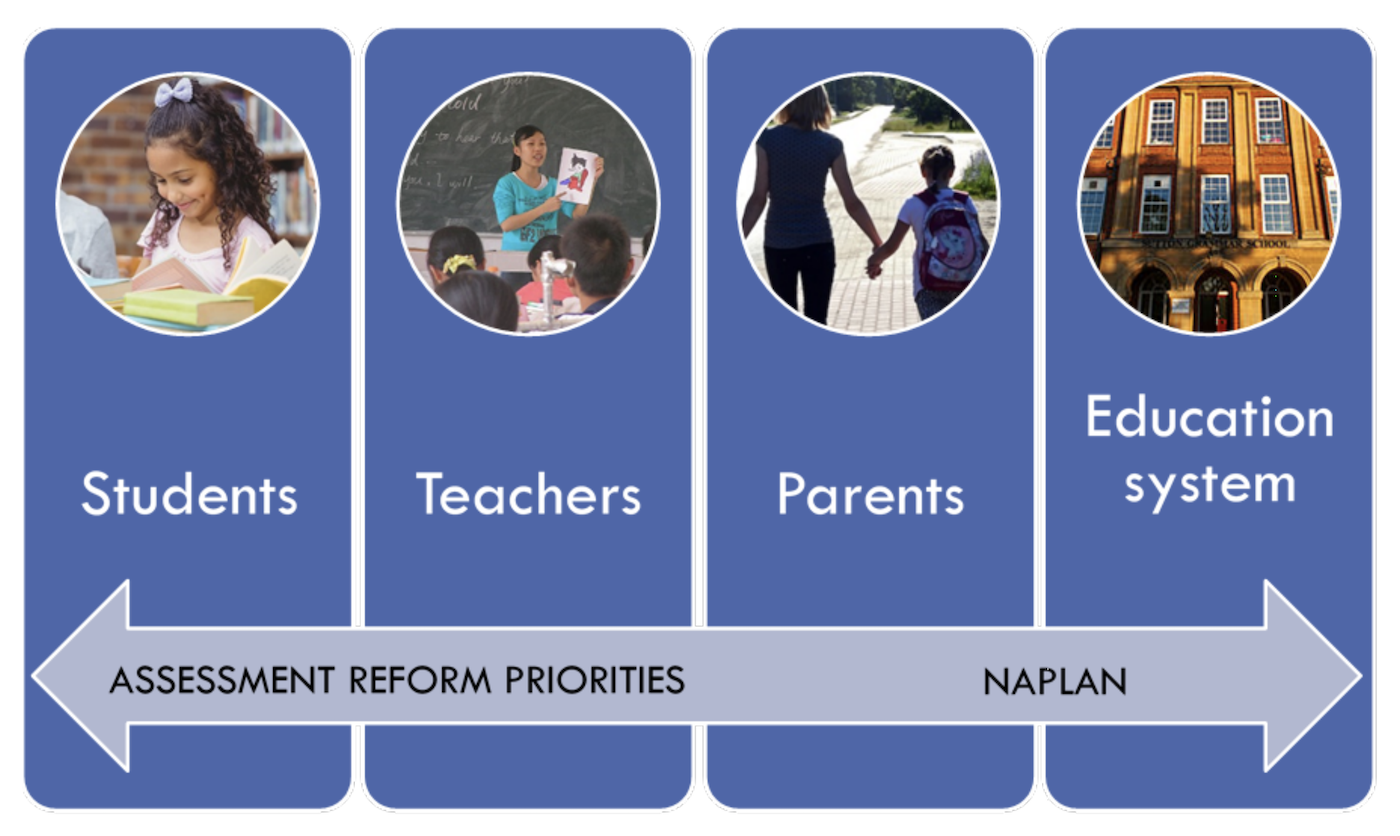We’ve talked about NAPLAN before, and how to maximise its usefulness, as with student growth being a more useful gauge of achievement. But concerns remain.
Are you concerned about NAPLAN’s
- relevance to classroom teaching?
- lack of attention to the full range of key learning areas?
- relevance to the full range of students in your class?
- usefulness as a diagnostic tool? or its
- narrow definitions of literacy and numeracy?
Change is on the way
There are moves to change what is happening to a more relevant and useful process that values students, recognises and uses teacher professional knowledge and skills, and is more suited to the current educational climate of embedding assessment in the daily classroom practice – something that is familiar to all classroom teachers already.
We’ve been testing our students under the National Assessment Program Literacy and Numeracy (NAPLAN) since 2008. In that time, there has only been one year that there was no school or community concern at its implementation. That was in 2020, when, because of COVID-19, many of our schools were closed and it was not possible to implement the tests with its previous strict guidelines. Online options showed that change is possible. In fact, some State Ministers for Education were looking at the possibilities:
NSW Education Minister Sarah Mitchell said the disruption caused by COVID-19 and the cancellation of this year’s NAPLAN provided an opportunity for reform.
“What students and their teachers need is a diagnostic tool that captures the breadth of a student’s ability, measures student growth and provides systemic and individual results back quickly,” she said.
Every other year’s implementation has had educators and parents adding to the ongoing list of complaints.
The NAPLAN process has been reviewed and reported on, with various idiosyncrasies:
Although students are referred to by necessity in government assessment reports, the 2019 Measurement Framework for Schooling in Australia (ACARA, 2018) does not refer to teachers at all (with only 1 reference to teaching, 3 to learning, mostly in reference to post-school learning pathways, and one mention of parents). In the most recent NAPLAN report (ACARA, 2019) teachers are mentioned just twice.
Endnote 1: p.66
Putting Students First: Moving on from NAPLAN to a new educational assessment system
There have been academic investigations, concerns expressed by teacher and parent organisations, and articles and letters to the editor. The process, and perceptions about assessment, must change.
Moving on from NAPLAN
The latest report to appear is from the UNSW Gonski Institute for Education, titled ‘Putting Students First: Moving on from NAPLAN to a new educational assessment system’. This is a comprehensive look at NAPLAN from its beginnings, issues and unintended negative complexities, and looks to the future.
The report proposes a new assessment system, shifting the focus from systems and accountability, to students.
This new national assessment program is described as being able to:
- better support student learning
- provide better information to parents
- provide better information to the government, and to
- Minimise the harmful side effects of current NAPLAN procedures.
Questions that drive this report are described in a detailed table on page 8:
- What do students need from the system?
- What information do teachers and schools need to support students?
- What information do parents need to support students and schools?
- What is the minimum information that a government needs for accountability, and to support all of the above?
Putting students first
Part 1 describes NAPLAN’s failings in addressing the needs of students, described as being a lost opportunity for strengthening schools, and for driving student learning, despite national commitments to education goals for young people, stated in the Alice Springs (Mparntwe) Declaration:
– to build an education system that provides every student with the knowledge, capabilities and attributes that will see them thrive throughout their lives …[with commitment to] … a focus on ensuring that Aboriginal and Torres Strait Islander peoples are supported to imagine, discover and unlock their potential.
Putting NAPLAN to the test
The report provides the historical background to NAPLAN. It includes consideration of the lack of a defined purpose of NAPLAN since its initial conception, the political imperatives that have shaped it since 2008, and the ways that educational thinking about assessment have shifted.
I strongly recommend Part 2 ‘Putting NAPLAN to the Test’ for teachers and other educational leaders to get the full picture of the development of NAPLAN and its processes.
We can learn from other systems, too, particularly when they are demonstrating improved outcomes for students, teachers, parents, and national learning goals. And particularly when, after 12 + years of NAPLAN, there is no sense of positivity in any of these.
The report includes essays on large-scale assessment approaches in Singapore, Finland, Scotland and Ontario.
Concerns and Change
This report provides a comprehensive proposal for working towards building future national programs which foreground the needs of students and the professional expertise of teachers. Even the Sydney Morning Herald’s education reporter appears to be listening to calls for reform. (https://www.smh.com.au/national/calls-for-naplan-to-be-replaced-with-national-bank-of-class-tests-20210513-p57rog.htmlSMH 13/5/2021)
So if you are concerned about NAPLAN’s
- relationship to mandated syllabus documents,
- influence on pedagogy,
- writing tasks that are limited, without authentic context, audience or purpose,
- heavy emphasis on the secretarial aspects of writing, and grammar emphasizing spelling and punctuation, and not using functional grammar terminology,
- unintended consequences like stress, inappropriate interpretation, or ‘cheating’ to get ‘better’ results,
- influence on the growth of coaching schools and the many commercial ‘NAPLAN preparation’ materials, despite test content being secret, even past papers since 2016, and which are not subject to any form of quality assurance or accountability (see Report p.34),
- provision of instructionally useful information,
then be ready to provide input into future reforms. They are coming!
Reference
Wilson, R., Piccoli, A., Hargreaves, A., Ng, P. T., & Sahlberg, P. (2021). Putting Students First: Moving on from NAPLAN to a new educational assessment system (The Gonski Institute Policy Paper #2-2021). Sydney: UNSW Gonski Institute.







